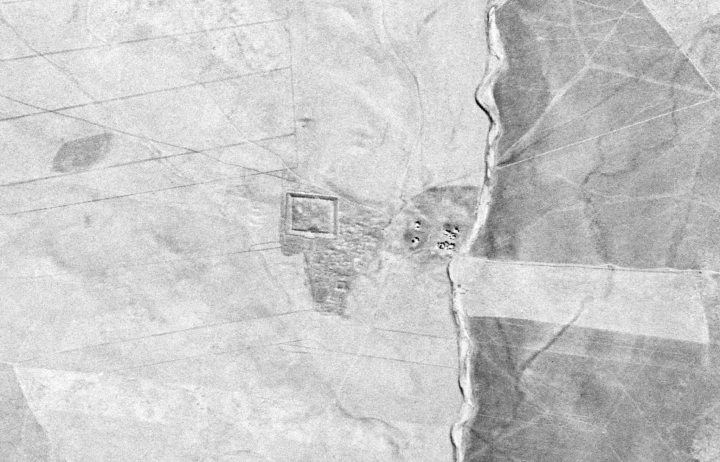Two-thousand years ago, forts were constructed by the Roman Empire across the northern Fertile Crescent, spanning from what is now western Syria to northwestern Iraq.
In the 1920s, 116 forts were documented in the region by Antoine Poidebard, a Jesuit missionary who conducted one of the world’s first aerial surveys using a World War I-era biplane. Poidebard reported that the forts were constructed from north to south to establish an eastern boundary of the Roman Empire.
A new Dartmouth study analyzing declassified Cold War satellite imagery reveals 396 previously undocumented Roman forts and reports that these forts were constructed from east to west. The analysis refutes Poidebard’s claim that the forts were located along a north-south axis by showing that the forts spanned from Mosul on the Tigris River to Aleppo in western Syria.
The results are published in Antiquity.

“I was surprised to find that there were so many forts and that they were distributed in this way because the conventional wisdom was that these forts formed the border between Rome and its enemies in the east, Persian or Arab armies,” says lead author Jesse Casana, the W.J. Bryant 1925 Professor of Archaeology in the Department of Anthropology and director of the Spatial Archaeometry Lab. “While there’s been a lot of historical debate about this, it had been mostly assumed that this distribution was real, that Poidebard’s map showed that the forts were demarcating the border and served to prevent movement across it in some way.”
For the study, the team drew on declassified Cold-War era CORONA and HEXAGON satellite imagery collected between 1960 and 1986. Most of the imagery is part of the open-access CORONA Atlas Project through which Casana and colleagues developed better methods for correcting the data and made it available online.

The researchers examined satellite imagery of approximately 116,000 square miles of the northern Fertile Cresent. It is a place where sites show up particularly well and is archaeologically significant, according to Casana. The team mapped 4,500 known sites and then systematically documented every other site-like feature in each of the nearly 3.1-by-3.1 mile survey grids, which resulted in the addition of 10,000 undiscovered sites to the database.
When the database was originally developed, Casana created morphological categories based on the different features evident in the imagery, which allows researchers to run queries. One of the categories was Poidebard’s forts—distinctive squares comparable in size to about half a soccer field.
The forts would have been large enough to accommodate soldiers, horses, and/or camels. Based on the satellite imagery, some of the forts had lookout towers in the corners or sides. They would have been made of stone and mud-brick or entirely of the latter, so eventually the structures would have melted into the ground.
While most of the forts that Poidebard documented were probably destroyed or obscured by agriculture, land use, or other activities between the 1920s and 1960s, the team was able to find 38 of 116 of Poidebard’s forts, in addition to identifying 396 others.

Of those 396 forts, 290 were located in the study region and 106 were found in Jazireh, in western Syria. In addition to identifying forts similar to the walled fortresses Poidebard found, the team identified forts with interior architecture features and ones built around a mounded citadel.
“Our observations are pretty exciting and are just a fraction of what probably existed in the past,” says Casana. “But our analysis further supports that forts were likely used to support the movement of troops, supplies, and trade goods across the region.”
David Goodman ’22 and Carolin Ferwerda, a research associate in the Spatial Archaeometry Lab, also contributed to the study.

